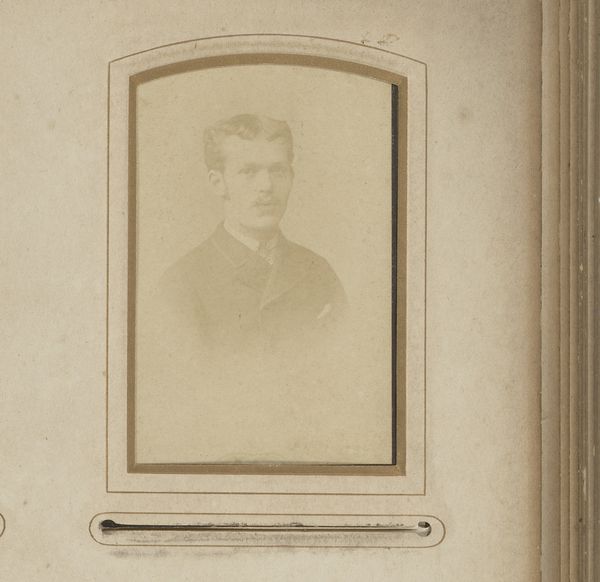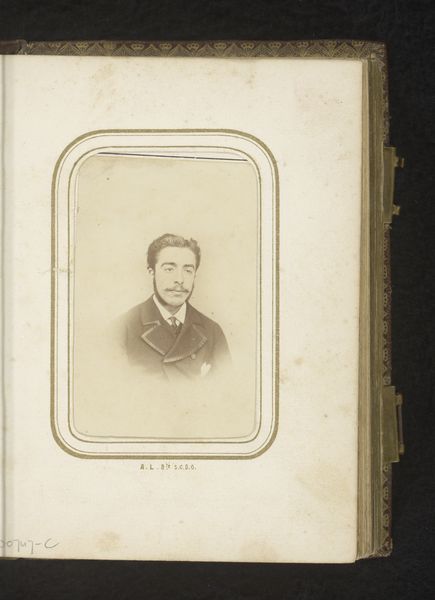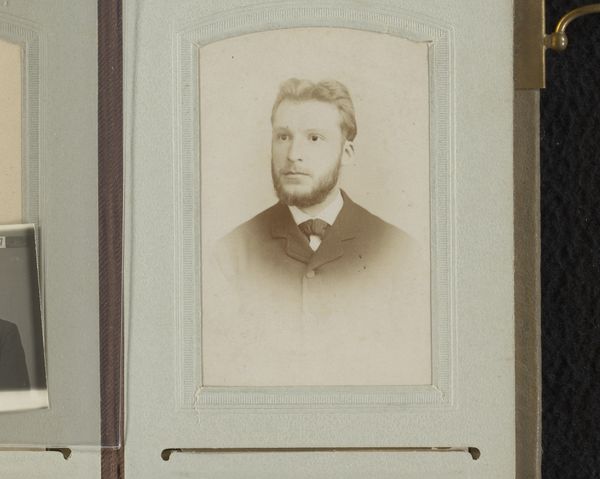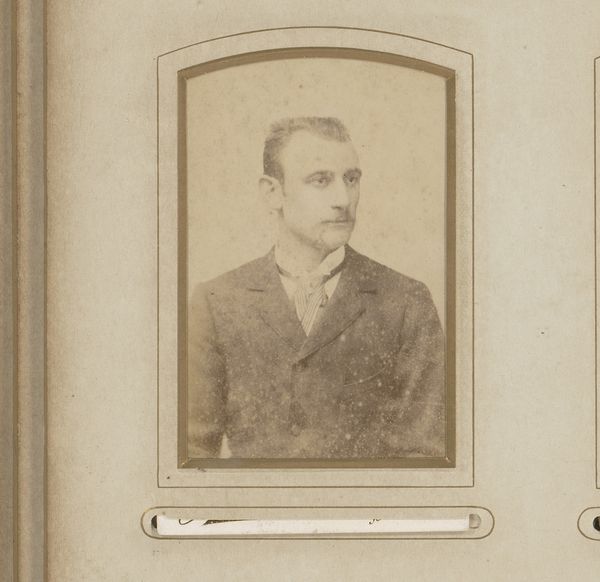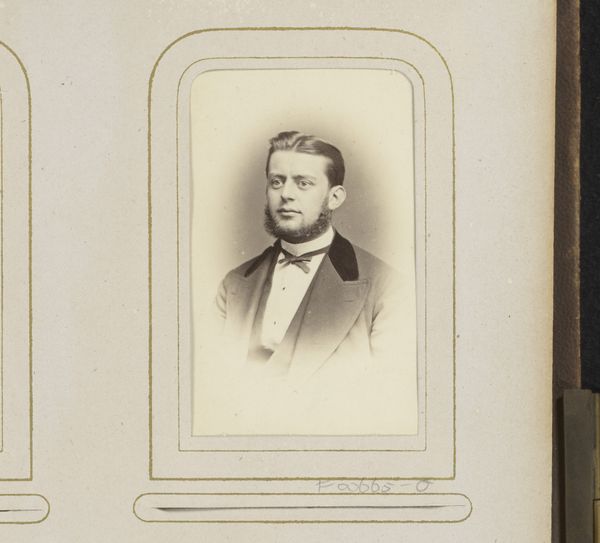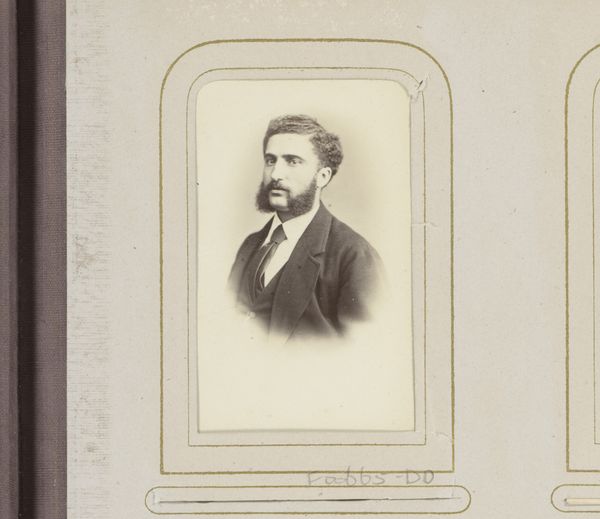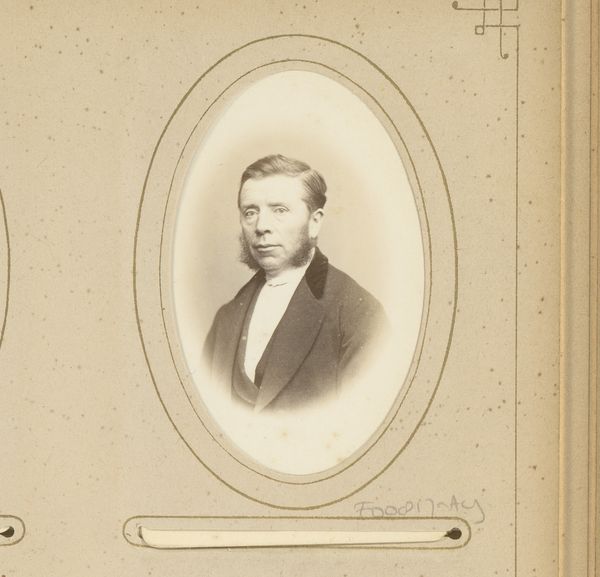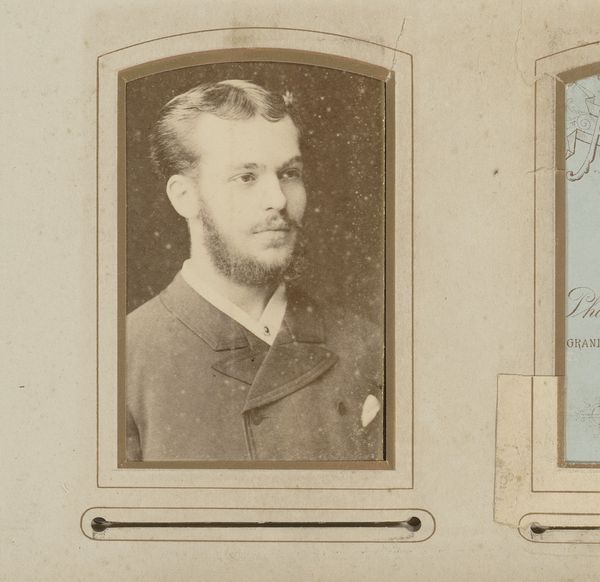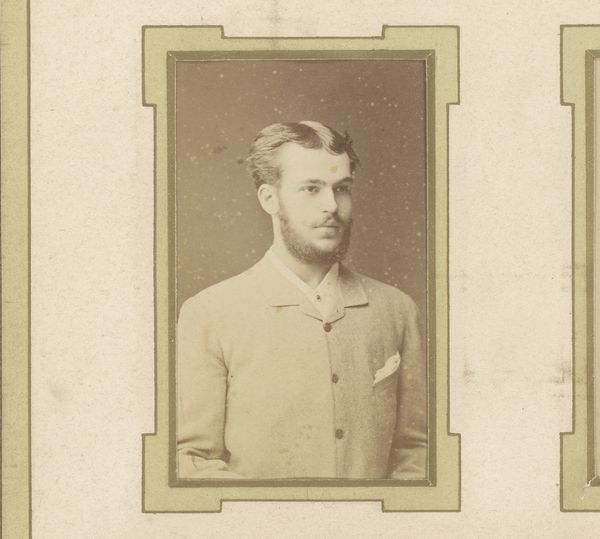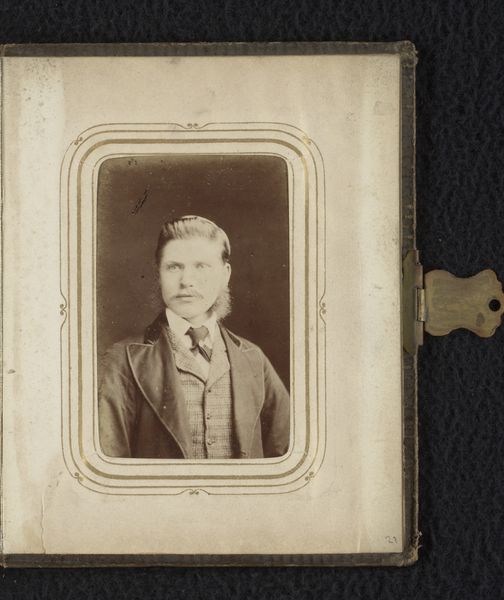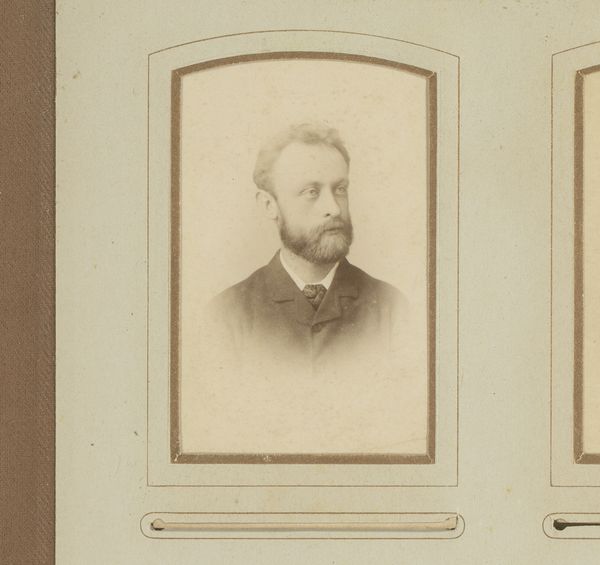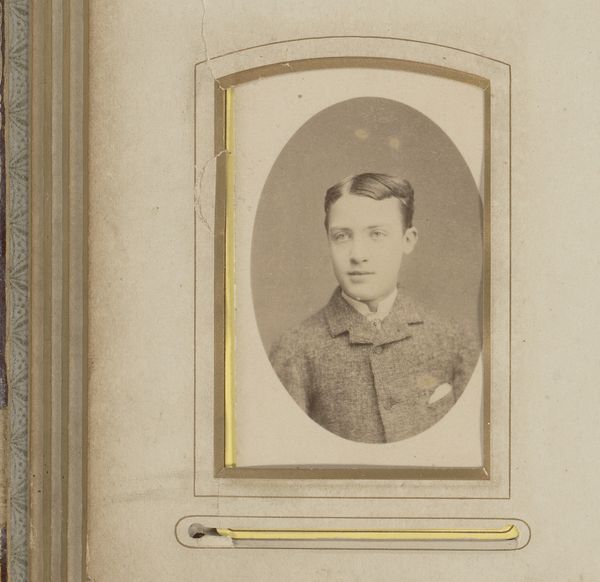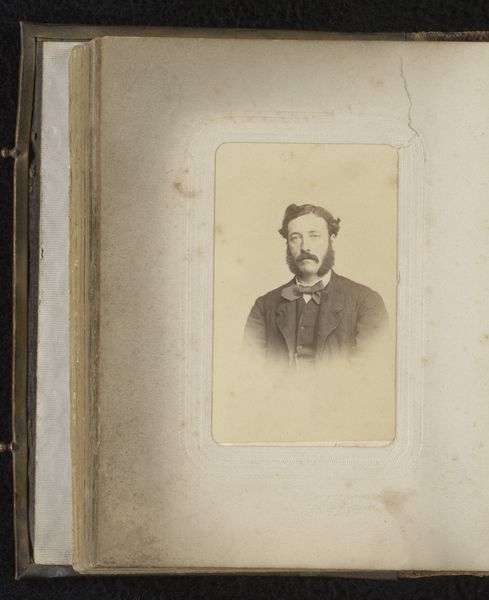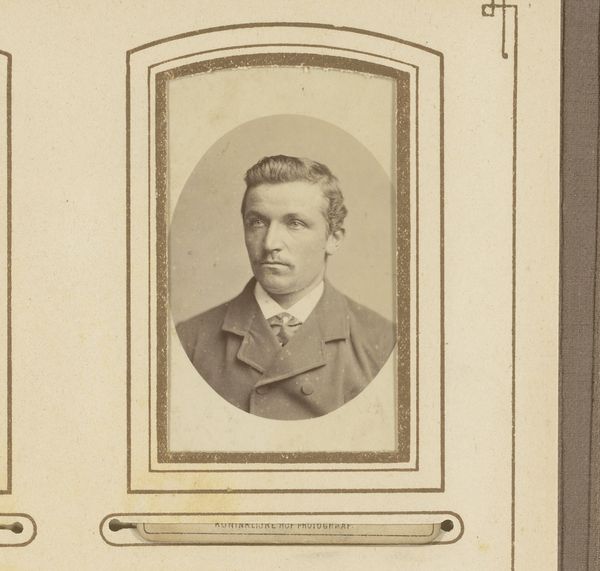
Dimensions: height 82 mm, width 53 mm
Copyright: Rijks Museum: Open Domain
Curator: This is a fascinating portrait from between 1880 and 1905, entitled "Portret van een man met snor en baard," or "Portrait of a Man with a Moustache and Beard," currently held at the Rijksmuseum. It’s a gelatin silver print. Editor: My initial impression is a kind of austere dignity. The sepia tones and the oval frame lend it a classical feel, almost like a cameo, but there's a modernity in the sitter's casual pose and the soft focus. Curator: Yes, the photograph’s materiality is intriguing. Gelatin silver prints became widely accessible during this period, leading to a boom in portraiture as a form of self-representation for the burgeoning middle class. Think about the democratization of image-making taking place at this time. Editor: Absolutely, the availability of such processes shifted portraiture's function. This isn't just about aristocratic legacy. It’s a moment in which individuals could commission images of themselves to circulate within their social sphere, bolstering their social capital. Curator: The photographer, Herman Salzwedel, whose name is also given in this context, appears to employ soft focus, giving it an almost impressionistic quality despite photography typically aiming at realism. It highlights the artistic manipulations that photographers employed to elevate the form. Editor: Consider also how these portraits were consumed. They were placed in albums, displayed in homes – active participants in shaping the narrative of the family and projecting a particular identity. What does this photograph convey about status or aspiration? Curator: That's a key question. Note also the plain background; rather than props that define one’s trade or class, there is simply a concentration on the individual and his essence. Also, the surface is beautifully preserved, telling about curatorial practices over time, of conservation. Editor: Indeed. What initially strikes us as a simple image reveals complex intersections of social mobility, technological advancements, and aesthetic aspirations. These factors came together at this critical historical moment. Curator: The photograph, in the end, encapsulates both the democratization and artification of portraiture. It also shows how those lines can become blurrier in their meanings and their function, as a historical product and object.
Comments
No comments
Be the first to comment and join the conversation on the ultimate creative platform.
